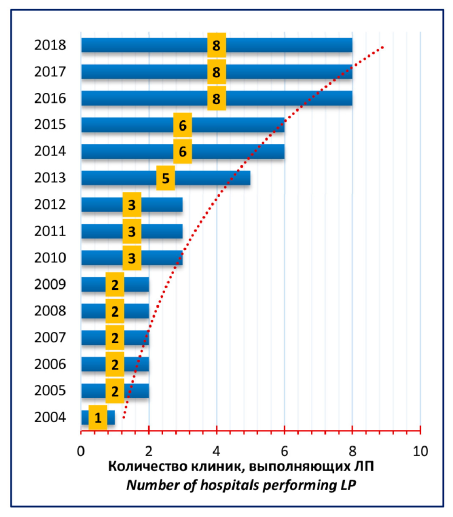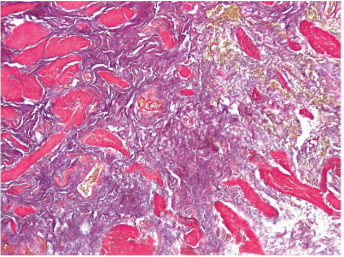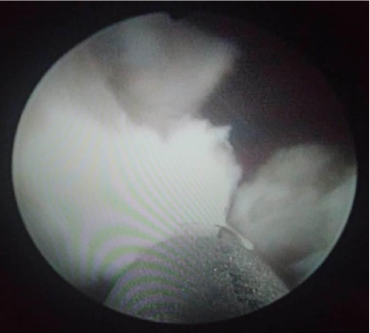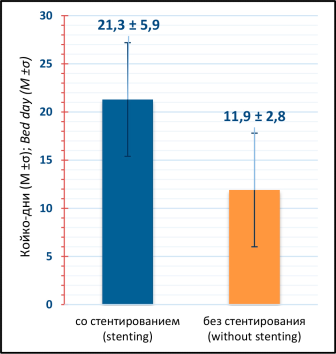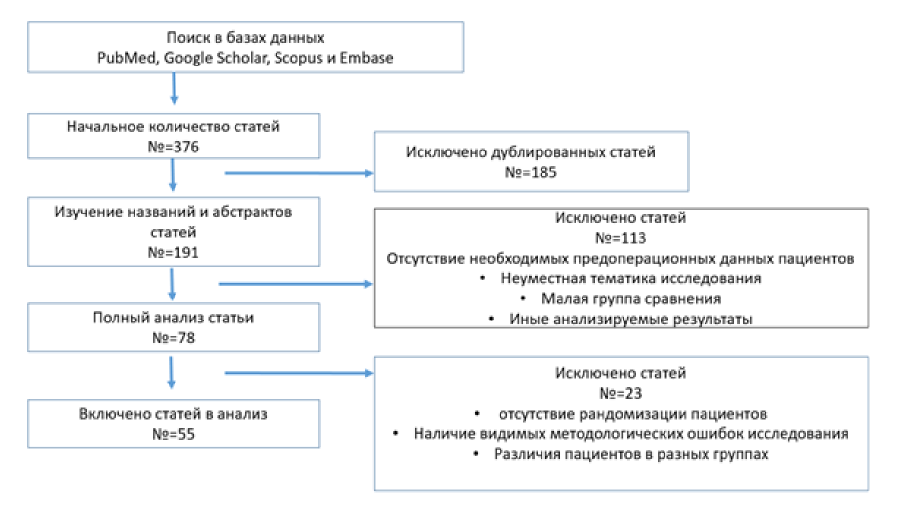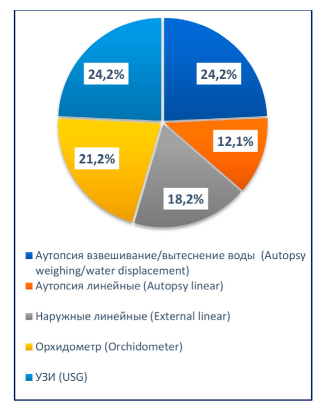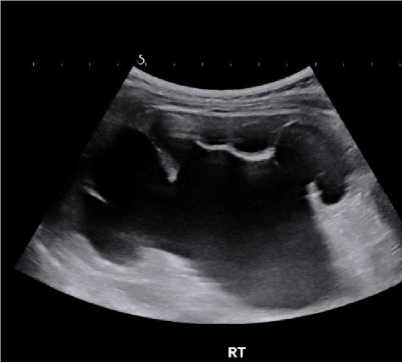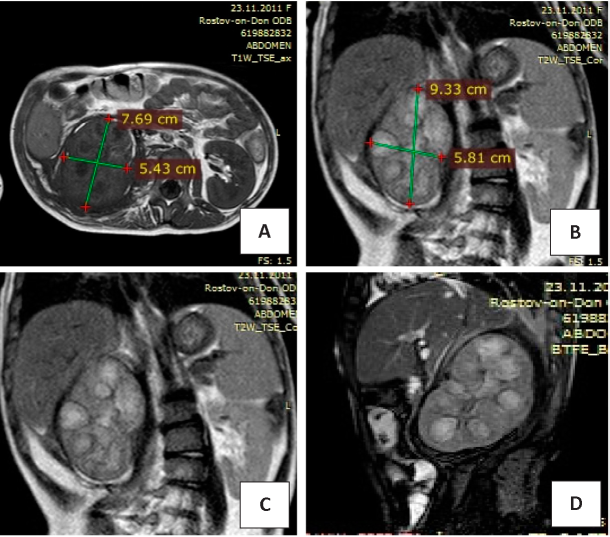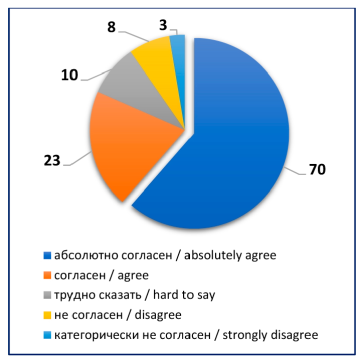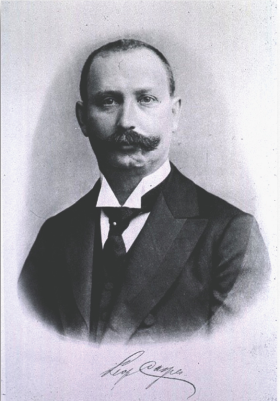ORIGINAL ARTICLES
Introduction. The use of minimally invasive surgery of urteropelvic junction obstruction was started in the in the mid-90s of the last century. Replacement rates of open surgery and methods of the minimally invasive surgery are different in various countries. We analyzed the spread of minimally invasive technologies in some regions of the Russian Federation.
Purpose of the study. To study the dynamics of replacement of open pyeloplasty with laparoscopic pyeloplasty in certain regions of the Russian Federation
Material and methods. Available data included the annual number of laparoscopic and open pyeloplasties, patient age, complications, and medium-term results. Our analysis screened 1581 pyeloplasties, which were performed during 2004‒2018 in eight regions of the Russian Federation. The patients were separated into two groups according to age. There were 566 infants and 1015 older children. A total 908 (57.4%) laparoscopic pyeloplasty (LP) and 673 (42,6%) open pyeloplasty (OP) were performed. Of those patients who underwent laparoscopic pyeloplasty, 274 (48.4%) were infants, while 624 (61.5%) were older children. The rates of LP and OP use were then assessed according to year of surgery. A binary logistic regression model was used to evaluate the statistical significance of the rate of LP use over time, to predict postoperative complications and to compare the effectiveness of LP in comparison with OP.
Results. The use of LP increased remarkably during the study period. In regions with 5 years of LP experience, LP utilization rate was significantly higher. The rate of LP in infants has been associated with increasing experience in the LP. A total, 70% of older children and 59% of infants were operated with LP in 8 regions in 2018.
Conclusion. In some regions of the Russian Federation, the rate of LP is markedly increased and almost replaces open surgery. In regions where LP has been introduced over the past 5 years, the replacement rate is higher than in regions where LP was introduced before.
Introduction. Erectile dysfunction is a multifactorial condition that is the inability to achieve or maintain an erection sufficient for sexual intercourse. The classic method for studying the fundamental aspects of erectile reactions in normal and pathological conditions, as well as creating new methods of treatment, is experimental animal models used in preclinical studies. However, for more than 30 years of studying this problem in experimental researches, the specific moment of occurrence of morphological alterations in the cavernous bodies of the penis has not been established. In addition, the choice of the time frame of the developed therapeutic effects on the penis is not substantiated and differs for various authors, which indicates the lack of validity of their results.
Purpose of the study. To determine the features of morphological alterations and the severity of fibrogenic pathological process in the cavernous bodies of the penis in the time dynamics of experimental modeling of hypotestosteronemia.
Materials and methods. Laboratory animals is 20 white male rabbits, «New Zealand» breed, Oryctolagus cuniculus genus. Penile cavernous fibrosis in rabbits was induced by hypotestosteinemia due to bilateral orchiectomy. The level of total testosterone in the systemic blood flow in laboratory animals was determined on 1, 2, 3, 14, 21, and 28 days. Biopsies of penile tissues were evaluated by pathomorphological examination (Hematoxylin-eosin, Masson’s trichrome, Weigert’s staining, and light microscopy). Statistical processing of the obtained data was performed using Microsoft Excel and «Statistica 10.0» programs using the Student`s T-criteria.
Results. Castration of rabbits leads to a 10-fold decrease in blood testosterone levels after 1 day after castration. Testosterone deficiency occurs by day 28. Morphological signs of the restructuring of smooth muscle cells, sinuses and connective tissue structures in the cavernous bodies of the penis are clearly defined by the day 7 after castration. Severe fibrotic changes in the cavernous tissues of the penis were noted at day 28.
Conclusion. Thus, the obtained data demonstrate the dynamics of morphological alterations in penile tissues as early as 7 days after inducing hypotestosteronemia, which indicates the need to revise the time frame of therapeutic effects in studies using the castration animal model of erectile dysfunction.
Introduction. The pharmacological market, which is rapidly developing, as well as the appearance of combined forms of drugs, determine the trend in the conservative treatment of patients with symptoms of the lower urinary tract due to benign prostatic hyperplasia (BPH). However, simultaneous administration of drugs from several drug groups, by the patients, who are burdened with concomitant diseases (cardiovascular disease, diabetes) in certain cases, makes surgical treatment of BPH preferable and sometimes the only possible option. In this instance, the doctor’s task is to choose the optimal method of surgery that minimizes the risks of complications and provides a long-term clinical effect. The actively developing technique of endoscopic enucleation of prostate corresponds to the current needs. Various types of energies, which have appeared lately in urological practice for enucleation of the prostate, have become an attractive alternative to transurethral resection of the prostate (TURP). The introduction of a bipolar technology into clinical practice has allowed to significantly expand the use of operations among elderly patients with comorbidities. Laser endourology has gone further in reducing the risks of possible complications. Currently we are witnessing a lack of research, which compares the use of modern methods with bipolar TURP (B-TURP) in elderly patients, i.e. groups with a high risk of intraoperative & postoperative complications.
Purpose of the study. To compare the results of various types of BPH endoscopic surgical treatment in elderly patients (> 60 years old).
Materials and methods. The study included patients who underwent three different operations treating BPH (B-TURP, B-TUEP, HoLEP) from October 2017 to September 2018. The criteria for inclusion in the study were as follows: the presence of moderate or severe obstructive symptoms of the lower urinary tract, prostate volume > 40 cm3, maximum urine flow <15 ml/s. Exclusion criteria were as follows: the presence of cystostomy drainage, the presence of the oncological process in urinary tract, active inflammatory process of urogenital system, earlier received surgical interventions on the organs of the urinary system. Each group of patients has been assessed on following criteria: International Prostate Symptom Score (IPSS and QoL), international index of erectile function (IIEF-5), the dynamics of postoperative changes in prostate specific antigen (PSA), maximum flow of urine, postvoid residual urine volume, intraoperative and postoperative parameters.
Results. 190 patients operated during the year were examined in the current study. Duration of operation, extent of resection, time of postoperative catheterization and duration of hospital stay rates were significantly lower in the HoLEP group. There have been no cases of complications above the 3 level by the Clavien‒Dindo scale.
Conclusions. HoLEP is the preferred method of surgical treatment of prostatic hyperplasia over 40 cm3 in terms of surgical safety, efficacy, and the duration of the patient’s recovery period. This method can serve as an alternative to electrosurgical techniques in elderly patients.
DISCUSSION PAGE
Introduction. Urinary tract drainage for pyelonephritis in pregnancy (PiP) is a topic that is rarely covered in the literature. Available sources are based on personal experience and personal opinions of researchers. In this way, a wide range of tactical decisions is born in such conditions.
Purpose of the study. To evaluate the effectiveness of the «traditional» draining treatment tactics for pyelonephritis in pregnant women.
Materials and methods. The study included 124 cases of PiP with dilatation of the pyelocaliceal system. Signs of urolithiasis and congenital malformations of the upper urinary tract have not been identified. The average age of the patients was 25 (15–40) years. PiP in the first trimester was diagnosed in 11.3% of women, in the second trimester is in 57.3%, in the third trimester is in 31.4%. In 60.5% of cases, a right-sided PiP was observed, in 24.2% is a left-sided PiP, and in 16.1% it was bilateral PiP. Assessment of dilatation of the upper urinary tract revealed a slight and moderate hydronephrosis in 94.4% of patients, and significant in 5.6%. During treatment, all patients underwent stenting of the ureters. Scheduled stent replacement was performed 6–8 weeks after the initial stenting or drainage replacement. Conversion to percutaneous puncture drainage was required in 4 (3.3%) patients.
Results. The early draining tactics of PiP was accompanied by a relatively rapid relief of hyperthermia (96.8% within 3 days) and leukocytosis (88.7% of patients within 4 days). The average hospital bed day for PiP was 4.6. 77.4% of patients required stent replacement during gestation. Stent-associated symptoms of varying severity were noted by 74% of women. Recurrent attack of pyelonephritis under stent drainage was observed in 19.4% of patients, the development of septicemia in 6.5%. In 5.7% of patients, a re-development of the pyelonephritis` attack was noted after removal of the internal drainage stent up to 2 months after delivery. Information was available on the birth and condition of the child at birth for 119 women. Delivery in term was observed in 89.5% of patients, premature spontaneous birth in 10.5%, of which with provocation of labor in 8.9%, with termination of pregnancy for medical reasons in 1.6% (development of preeclampsia, progression of the sepsis phenomena). Self-abortion, intrauterine fetal death or stillbirth was not observed in any woman.
Conclusion. The relatively rapid relief of hyperthermia, leukocytosis, a short period of inpatient treatment, the absence of fetal death cases, maternal and infant mortality positively characterize the «traditional» draining tactics. At the same time, a high percentage of the frequency of the preterm delivery threat, maintenance therapy on the stent (16.1%), recurrent attacks of pyelonephritis in drainage conditions (19.6%) during gestation, and also after stent removal in the postpartum period (5.7%), other variations of stent-associated symptoms and complications create the basis for reflection, the search for more optimal tactical and therapeutic approaches.
Summary. Pyelonephritis during pregnancy is considered as a complicated urinary tract infection. Many Russian publications recommend drainage of the upper urinary tract in pregnant women with pyelonephritis.
Purpose of the study. To evaluate the effectiveness and safety of drainage-free management of patients with pregnant pyelonephritis, as well as the epidemic prevalence of pyelonephritis during pregnancy.
Materials and methods. The efficacy of conservative therapy and postural drainage in 162 pregnant women with pyelonephritis over the past 3 years has been retrospectively evaluated.
Results. The highest frequency of pyelonephritis during pregnancy was noted in the second trimester. Conservative therapy was effective in most patients. Ureteric stent drainage was performed in 3.7% of patients. Hospitalization period increased in this group reliably.
Conclusions. Pyelonephritis during pregnancy cannot be considered obstructive. Drainage-free management of pregnant women with pyelonephritis should be considered as a priority approach.
Pyelonephritis during pregnancy is a threat to the fetus and the pregnant woman. There are no studies showing the benefits of drainage management for pregnant women with pyelonephritis. Despite this, the drainage of the upper urinary tract is a tradition of a fairly large number of clinics. Guidelines for the duration of drainage in this category of patients are also not defined. Frequently, drainage is removed after delivery. And this is the «standard» in clinical practice. The negative side of this approach is persistent drainage infection, obstruction, and the need for frequent drainage changes. The article presents the clinical observations of patients with early removal of urinary drainage, which made it possible to stop bacteriuria and inflammatory changes in the urine.
REVIEWS ARTICLE
Radical cystectomy (RC) remains the main method of surgical treatment of patients with muscle-invasive bladder cancer. Currently, in case of radical cystectomy, along with the open, robot-assisted access is actively used. This review presents an analysis of the main results of a robot-assisted RC (RARC), which are compared with those after an open RC. Perioperative parameters, functional and oncological results of robot-assisted and open RC were evaluated. According to the data obtained, it was found that with robot-assisted access there is a low volume of blood loss and a percentage of blood transfusion, but a high cost and a long operation time. In addition, there was no significant difference in the daytime and nighttime continence, and the quality of life of patients, as well as oncologic results between the two procedures. Further accumulation of experience allows us to improve the oncological and functional results of the robot-assisted RC, as well as to reduce the number of postoperative complications, high degree according to Clavien-Dindo grade especially.
The article provides an overview of the most influential papers on the topic of «male infertility». The main selection criteria were the practical significance of the article and the impact factor of the journal in which it was published, according to SCImago Journal Rank (SJR). As a result, we created the list of 10 papers published in the IV quarter (October − December) of 2019. The review included articles on the following issues: the effectiveness and prognostic factors of the effectiveness of microsurgical testicular sperm extraction (micro-TESE), the significance of sperm DNA fragmentation and «advanced paternal age» in the effectiveness of assisted reproduction technologies (ART) procedures, the role of latent chlamydial infection in azoospermia, management of adolescents with Kleinfelter syndrome, the effectiveness and safety of aromatase inhibitors in treatment of male infertility, sperm microbiome, the association between ART procedures and the cancer risk in children, follicle-stimulating hormone (FSH) treatment of male idiopathic infertility.
Introduction. Notwithstanding the general increase in world population, there is a steady decline in birth rate. Studies have shown a tendency towards worsening of qualitative and quantitative indices of the ejaculate. From the foregoing we may also presume a decline in size of male gonads. Nevertheless, information about the tendency of change in testicular size in the population is currently unavailable.
Purpose of the study. Assessment of global secular trend as regards changes in the size of testes in men.
Materials and methods. A search was conducted on published scientific research in the English language and Russian language in Pubmed and eLibrary. Additional searches in citations of identifiable investigations. A selection of data from publications with metric characteristics of gonads in relatively healthy men aged 18‒60 years. The mean of values obtained were determined and homogenized with the aid of formulae for volume calculations. Statistical analysis of the data was carried out with the aid of the program STATISTICA for Windows v.10.
Results. The search yielded 126 identified publications, published between 1902 and 2018. Analysis of the various works led to a selection of 33, which contained information that satisfied the inclusion criteria. Analysis of the obtained data did not reveal any trends in change of testicular size over the past century. Mean arithmetic weighted value was 17,43±5,64; 95% CI (17,32; 17,54).
Conclusion. In the light of global trends towards a reduction in fertility, it is necessary to conduct a wide range of varied investigations in order to understand the nature of this process. Standardization of methods of assessment results obtained will help in reducing errors whilst assisting in the analysis of existing tendencies.
CLINICAL CASES
Currently, laparoscopic pyeloplasty is gaining popularity in pediatric urology due to less invasive compared to the open standard pyeloplasty. Nevertheless, there are basic “critical” remarks about this pyeloplasty technique in children, which involve some difficulties in comparing tissues and intracorporeal suturing due to the limited available space. In addition, a significant negative point of laparoscopic pyeloplasty is the duration of the operation, especially in the younger age group of children. Despite all the advantages associated with minimal invasiveness, there are alternative methods of surgical treatment, which show quite impressive results. In our practical work, we performed minimally invasive open pyeloplasty: with a miniature incision, in a child with ureteropelvic junction obstruction with a good result. In addition, this access provides a wide exposure of the ureteropelvic junction and easy tissue manipulation.
The paper presents a case history of xanthogranulomatous pyelonephritis that developed in a 7-year-old girl in combination with urolithiasis background. Our available sources for the last 50 years contain only 283 descriptions of pediatric xanthogranulomatous pyelonephritis (XGP) cases. We were able to find in domestic publications descriptions of two clinical observations of histologically proven XGP in children of 15 and 17 years. Clinical manifestations of the disease, radiological imaging data, and laboratory findings during the initial three months of the condition fit the disease pattern of a diffuse acute pyelonephritis. A remarkable peculiarity of the presented case was in the two-month interval during which the girl with a severe destructive renal process remained under medical supervision as an outpatient, suffered no pain, and had normal urinalysis results. Nephrectomy was performed from lumbotomy access considering clinical manifestations, data from laboratory and radiological isotope studies. The postoperative period was complicated by the development on the 2nd day of acute perforation of a duodenal ulcer. The intensity of perinephric process was unique and never encountered in our earlier practice. The described changes made kidney exposure extremely difficult. Therefore, nephrectomy should be carried out exclusively in the national highly specialized pediatric urological centers.
EXCHANGE OF PRACTICAL EXPERIENCE
Improvement of patients` knowledge about their disease is an important part of management of chronic diseases. One of the effective methods to increase the level of medical education of the population is to hold regular meetings with patients within the framework of «schools for patients». Urolithiasis is one of the most common urological diseases (3.5‒9.6% of the population). In addition to its high prevalence, Urolithiasis has a high recurrence rate (50‒75% over 5‒10 years). The most common prostate diseases are prostatitis, benign hyperplasia, and cancer. These diseases have a chronic course and require а long-term observation. Treatment of urolithiasis and prostatic diseases is one of the priority fields for the urology department of the Pavlov First St. Petersburg State Medical University. In addition to surgical treatment, the specialists of urology department take measures aimed at prevention of recurrence and complications of these diseases. Schools for patients with urolithiasis and prostate diseases are held every 3 months. The topics for discussion are chosen by the patients themselves. In addition to reports, patients undergo ultrasound of the kidneys, bladder and prostate, as well as consultations. Participation in schools of patients creates a conscious attitude to their disease, increases adherence to treatment and improves the prognosis of the disease. The distribution of such programs corresponds to the modern concept of preventive medicine and increases the efficiency of providing medical care to the population.
HISTORY OF UROLOGY
The development and scientific priorities of European urology of the second half of the XIX and early XX centuries are analyzed. The main dates of life and scientific and practical activity of Prof. Leopold Kasper are presented. The scientific views and thoughts of the scientist are noted. He specialized in urology under the leadership of G. Thompson, P. Freyer, F. Guyon, I. Albarran and L. Dittel after graduating from the University of Berlin in 1883. L. Kasper was the founder of a large German urological school. In addition, he is the author of many works, among which research on cystoscopy, endoscopic operations, functional diagnosis of kidneys diseases, treatment of renal tuberculosis and kidney stone disease, prostate diseases, transurethral galvanocaustics of bladder tumors, etc. are particularly distinguished. He constructed a special catheterization cystoscope (1895) through which for the first time it became possible to study the functional ability of each kidney individually, which greatly facilitated the recognition and treatment of surgical diseases of the kidneys and upper urinary tract. He improved and put into practice a functional renal test with floridzine and cryoscopic urine examination obtained from each kidney separately by catheterization of the ureters. It is noted that L. Kasper was one of the founders of the Society of German urologists, whose founding meeting was held in 1907 in Vienna. In the same year, L. Kasper, together with other prominent surgeons and urologists, founded the journal «Zeitschrift für Urologie», of which he was editor for decades. L. Kasper was an honorary member of nineteen scientific societies, including the Society of Moscow urologists, of which he was elected an honorary member in 1924.



